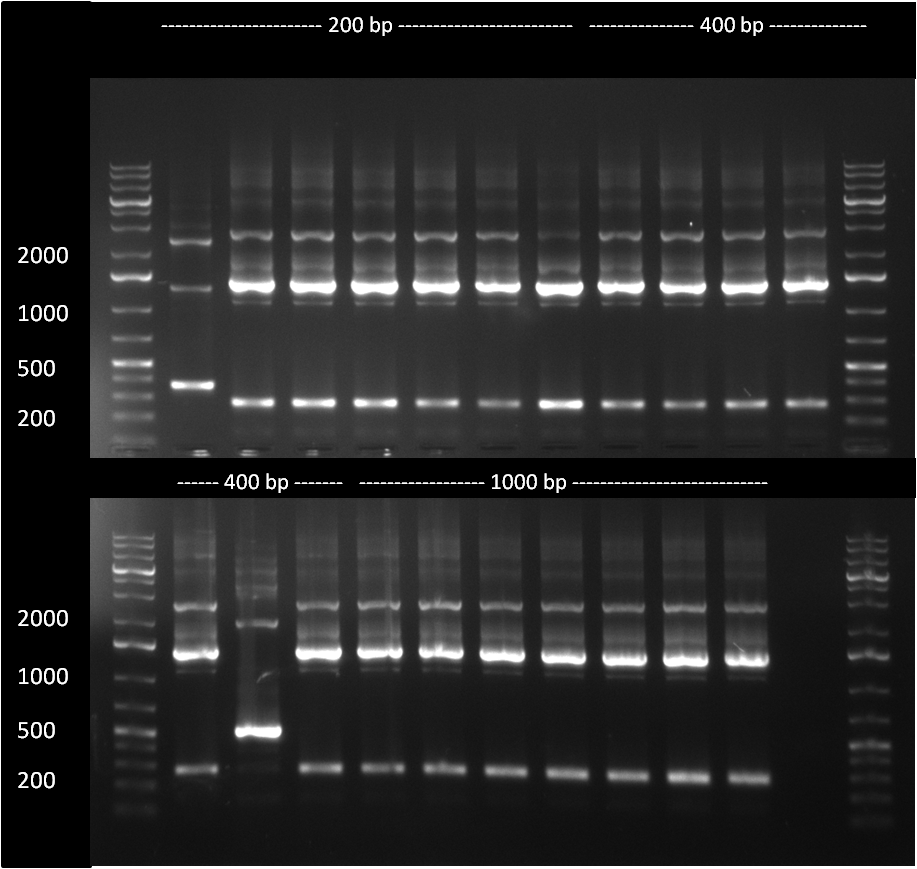|
|
| Line 3: |
Line 3: |
| | {{:Team:Heidelberg/Pagetop|note_miMeasure}} | | {{:Team:Heidelberg/Pagetop|note_miMeasure}} |
| | | | |
| - | = 05/07/2010 - 11/07/2010 = | + | ===05/07/2010 - 11/07/2010=== |
| - | <br />
| + | |
| - | == Preperation of competent E. coli Top10 and DH5alpha == | + | |
| - | * plating of E. coli Top10 and DH5alpha on a agar plate (LB, without Amp); Preperation of competent cells according to the following protocol:
| + | |
| - | First, a 20 ml over night culture was inoculated in antibiotic free LB medium from a fresh single colony and transferred into 400 ml antibiotic free LB medium the next day. This culture was incubated at 37 °C while shacking until an OD600 of 0.5 – 0.6 was achieved. The culture was than cooled down on ice, centrifuged (8 min, 4 °C, 3500 rpm), the supernatant discarded and the pellet resuspended in 10 ml 100 mM CaCl2. After addition of further 190 ml 100 mM CaCl2 the suspension was incubated on ice for 30 min. The suspension was than again centrifuged (8 min, 4 °C, 3500 rpm), the supernatant discarded, the pellet resuspended in 20 ml 82.5 mM CaCl2 with 17.5 % glycerol and aliquoted. The aliquots were flash frozen in liquid nitrogen and than stored at -80 °C until usage.
| + | |
| - | <br />
| + | |
| - | == Cell Culture Starting ==
| + | |
| - | * thawing of Huh-7, HeLa p4 and HEK-293 cells according to the following protocol
| + | |
| - | :* vials from liquid nitrogen were thawn at 37 °C
| + | |
| - | :* once, the probe was nearly completely thawn, cells were thrown into pre-warmed DMEM (10 % FCS, L-Glut, P/S) and gentely mixed
| + | |
| - | :* cells were spinned down at 800 rpm, 3 min; supernatant was discarded
| + | |
| - | :* the pellett was resuspended in 10 ml DMEM an plated on a p100 cell culture dish in the following media according to the different cell lines:
| + | |
| - | <br />
| + | |
| - | Media for Hela and Hek cells:
| + | |
| - | :* DMEM with 10 % FCS, 1 % L-Glut and 1 % P/S
| + | |
| - | Media for HUH-7 cells:
| + | |
| - | :* DMEM with 10 % FCS, 1 % L-Glut and 1 % P/S and 1 % non-essential amino acids
| + | |
| - | <br />
| + | |
| - | '''from now on, cells were kept constantly in culture during the whole iGEM'''
| + | |
| - | for passaging cells, the cells were split according to the following protocol:
| + | |
| - | :* remove media
| + | |
| - | :* wash cells one time in PBS (10 ml for p100 dish)
| + | |
| - | :* remove PBS; add 1-3 ml of trypsin-EDTA solution and incubate cells for 5 min at 37 °C
| + | |
| - | :* add 5 ml of the according media
| + | |
| - | :* take 1/10th of the cell suspension and plate out on the according dish (either p100 dish, 6 well plate or T-flask)
| + | |
| - | <br />
| + | |
| | <br /> | | <br /> |
| | + | Preperation of competent E. coli Top10 and DH5alpha |
| | + | Cell Culture Starting |
| | | | |
| | = 12/07/2010 - 19/07/2010 = | | = 12/07/2010 - 19/07/2010 = |

 "
"







